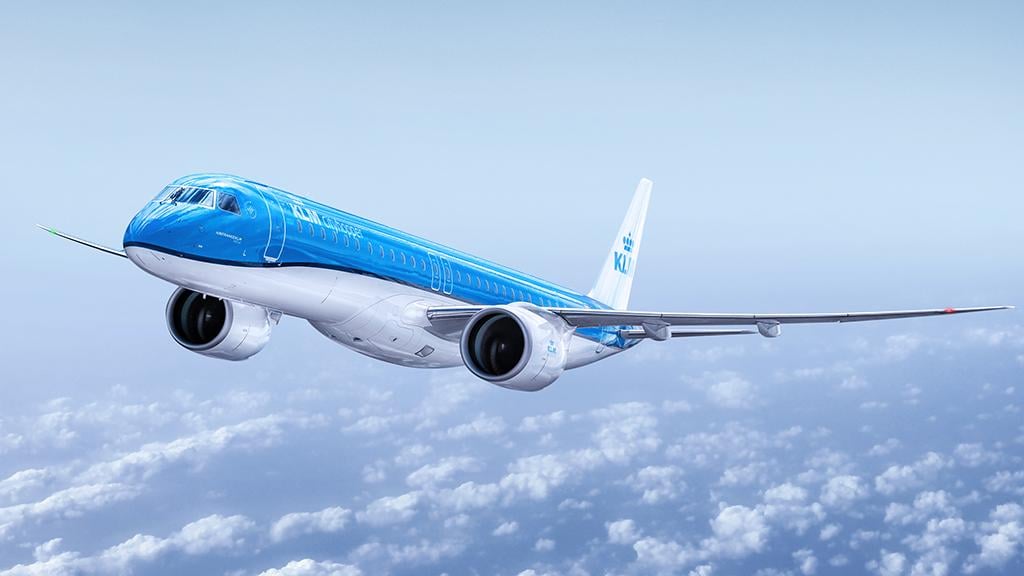Why Regional Aircraft-Makers Are Looking At What They Could Do Next | リージョナル機メーカーが、次に何ができるかを模索している理由

今世紀初頭の航空機ブームを覚えているだろうか?急速に拡大する経済の中で、何もかもが実現できると思える時代だった。特に50席規模のリージョナルジェットは、2000年だけで航空各社は1,000機近くを発注した。そしてエンブラエルE170/190が登場した数年後の2007年には、さらに750機が上積みされた。
今日では、業界の状況は大きく異なっている。2020年はコロナ危機の影響により、民間航空業界全体の受注数はわずか53機だった。2019年の受注数も310機に留まり、うち110機は中国の国有航空会社向けのComac(中国商用飛機)製の機材だ。
そして、いくつかのメーカーはマーケットから完全に撤退した。最も顕著なのはボンバルディア社で、CRJシリーズを三菱重工業に、ターボプロップ機はLongview Aviation Capital社に売却した。その三菱もスペースジェットの開発を一時停止、デハヴィランド社もQ400の生産を中断、エンブラエル社も受注のないE175-E2の運航開始を1年延期している。エンブラエル社のE2シリーズの大型版も、最近E195-E2の大量受注があったものの順調とはいえない。ATR社のターボプロップ機は初飛行から37年間にわたり生産されているが、売れすぎたともいわれる数年間を経て、生産数は非常に少なくなっている。要するに、かつては有望な成長市場だったが、今やニッチな状態に逆戻りしているということだ。
次にリージョナル市場の革命が起こるとき、それは大型機によるものではないかもしれない。むしろより小型な機種や、電動または電動ハイブリッド技術がその原動力になるだろう。多くのプロジェクトが生まれており、中には今後5年以内に実現するものもあることから、特にヨーロッパでは一部の航空会社が大きな関心を示している。
エアバス社とボーイング社の2強体制を長期的にComacが崩せるかどうか、という主力機市場と違い、リージョナル機はマーケットがそれほど形成されていないことから、短期間で大きく様変わりする可能性を秘めている。果たしてリージョナル機市場はパンデミック後のルネサンスに向かっているのだろうか?
リージョナル機の始まり
1992年のCanadair CRJ100の就航を皮切りに、1990年代中頃にメーカーや航空会社はリージョナル機というセグメントを作り出した。それまでは、快適性が低い・うるさい・遅いと、三拍子揃ったコミューター機で雲の中を飛ぶことが多かったニッチなマーケットが、突然魅力的な成長市場になったのだ。新型のリージョナルジェットは従来のナローボディ機よりも航続距離が短く、しかも高価だったが、航空会社・乗客双方にとって魅力的だったことから、それらは大した問題にはならなかった。航空会社は従来では不可能だったフィードを送り込むことでハブ空港を変革させ、乗客としても、空間は狭いながらもジェット機の快適性を味わうことができた。
パンデミックが航空会社の財務状況に影響を与えたことは明白だが、他にもリージョナル機の販売を低迷させた長期的かつ構造的な問題がある。リージョナル機メーカーは、過去の自らの成功の犠牲者になっているのだ。初期の50席規模のリージョナルジェットは、その高コストにより何年も前に退役しており、より大型の機材に置き換えられている。つまり、現在のフリートの機齢は比較的若く、後継機を導入することに経済的メリットがない。第1世代E-Jetを例に挙げると、その平均機齢は10年だ。このため、大型リージョナルジェット機のマーケットを独占しているエンブラエル社といえども、パンデミックの影響を被っているといえる。
今後の開発計画
エンブラエル社では、70席および90席規模で航続距離1,000浬程度の、新たな大型ターボプロップ機の開発に注力している。この機体は基本的にE2シリーズのキャビンを使用し、新設計の主翼と尾翼、そして新型ターボプロップエンジンを搭載しており、来年のローンチを予定している。
Silva e Souza氏によると、最近「航空会社の関心度が一変した」という。また彼は「我々が参入するなら、リーダーでなくてはならない。需要が回復した時、それは新型ターボプロップ機によるものだろう」と付け加え、さらに昨年秋のアメリカ大統領選後、バイデン政権がより持続可能性を重視していることから、アメリカでは「強い需要」があると述べた。

一方のATR社は、現在トップに位置するターボプロップ機メーカーだ。CEOの Stefano Bortoli氏は、年間60〜70機を納入する体制に戻るためには、短期的には顧客の財務状況の健全化が重要だと語る。同氏は「地域航空会社が航空券を販売しなければ、彼らは資金を得ることができない。また、彼らの規模では大規模航空会社のように流動性を確保することも出来ない。ただし、後者については政府からの支援を得ることができる」と話す。結論として、彼は地域航空会社に対するより協力的な姿勢を求めている。
当然のことながら、Bortoli氏はライバルであるエンブラエル社の計画には危機感を覚えている。「私が最初に感じたのは、ターボプロップ機開発への参入を計画する企業があるということは、この分野が航空業界において重要であることを示している」と彼は述べた。また、エンブラエル社に対しては、ATR社が現在進めている段階的改善戦略で対抗することになるだろうと彼は付け加えた。ATR社とエンブラエル社が提携する可能性については「そのようなことは考えていない」という。
しかし、コロナ危機以前のATR社の計画と比べると、顧客がATR42-600Sのデリバリーを受けられる状態になるまでは最大で18ヶ月長くかかるという。 同社のエンジニアリング担当上級副社長・ Stephane Viala氏は「我々は確定発注を含む20機の受注残を持っており、頭金も全額受け取っている。ただ、我々としてはタイムリーに市場に提供していきたい」と述べた。
以上は、Jens FlottauとThierry Duboisが Aviation Week & Space Technologyいた記事です。フルバージョンの記事では、小型リージョナル機の復権に対して慎重な見方をする技術面以外の理由や、ATR社によるゼロエミッション機の実現に向けた取り組みを紹介しています。
Remember the aviation boom times around the turn of the century, when it seemed almost anything would work in the fast-expanding economy? Those 50-seat regional jets, especially—airlines ordered almost 1,000 regional aircraft in the year 2000 alone. And in 2007, a few years after the introduction of larger regional jets such as the Embraer 170/190, the manufacturers collected orders for another 750.
Today, the industry could not look more different. The entire commercial aviation sector recorded only 53 orders in 2020, largely due to the effect of the coronavirus pandemic. Total orders stood only at 310 aircraft in 2019, but 110 of them were for Comac aircraft and placed by state-owned Chinese airlines.
Several manufacturers have exited the market entirely—most prominently Bombardier, which sold its CRJ series to Mitsubishi and its turboprops to Longview Aviation Capital. Mitsubishi shelved the SpaceJet, de Havilland is “pausing” production of the Q400, and with no firm orders in place, Embraer is delaying introduction of the 175-E2 by another year. The larger versions of Embraer’s E2 jets are still not selling well, despite a big recent order for the 195-E2. Versions of the ATR turboprop are still being built 37 years after first flight, albeit at very low rates after some solid years in which, some say, ATR oversold. In short, what used to be a promising growth market is back to niche status for now.
The next regional revolution may not be driven by larger aircraft, though. Instead, their smaller counterparts and the advent of electric and hybrid-electric technology will set the pace. A multitude of projects are emerging, some of which could become reality within the next five years, and some airlines, particularly in Europe, are showing real interest.
Unlike in the mainline aircraft market, where Airbus and Boeing are only facing the longer-term prospect of Comac breaking up their duopoly, few things appear to be set in stone for the regional market, which could look very different in a relatively short period. Is regional aviation headed for a post-pandemic renaissance?
THE BEGINNINGS
In the mid-1990s, aircraft manufacturers and airlines had invented a new segment, regional jets, led by the Canadair CRJ100 that entered service in 1992. What was once a niche for so-called commuter aircraft—uncomfortable, noisy and slow turboprops that were often flying in the clouds, not above them—suddenly became an attractive growth market. The new jets did not necessarily have the same range as traditional narrowbodies, and they surely had higher unit costs, but that did not matter so much because they were attractive for both airlines and passengers. Airlines transformed their hubs with a lot more feed than they could have generated before, and space constraints aside, passengers could still fly with jet comfort.
Beyond the obvious effect of the pandemic on airline finances, there are longer-term structural issues that have slowed sales. For starters, regional OEMs have become the victims of their own success. While a lot of early 50-seaters were retired years ago because of their high unit costs, they have already been replaced by larger aircraft. The current fleet is still relatively young, making the prospect of replacement economically unattractive. For example, the average age of the first-generation E-Jets is 10 years. Therefore, even Embraer, which enjoys a monopoly in the large regional jet space, is feeling the effects of the pandemic.
FUTURE PROJECTS
At Embraer, the current focus is on launching a new large turboprop offered in 70- and 90-seat versions that feature a range of around 1,000 nm. The aircraft will essentially use the E2 cabin with a new wing, empennage and new turboprop engines. Embraer plans to launch the aircraft next year.
There has recently been “a step change in the level of airline interest,” says Silva e Souza. “If we come to this market it is to be the leader.” When demand returns, “it will be for a new turboprop,” he adds, saying he even anticipates “strong demand” in the U.S. after the presidential election last fall, given that the Biden administration is focusing much more on sustainability issues.

ATR, meanwhile, is the incumbent leading turboprop manufacturer. In order to get back to 60-70 deliveries per year, customer financial health is essential in the short term, says CEO Stefano Bortoli. “If [regional airlines] don’t sell tickets, they cannot generate cash,” Bortoli says. “Given their size, their ability to have access to liquidity is not the same as big airlines. The latter are supported by governments.” As a result, he calls for a more supportive attitude toward regional carriers.
Bortoli, unsurprisingly, strikes a cautious tone about the plans of rival Embraer. “My first takeaway is that if somebody else is considering joining turbo-prop production, it confirms the importance of that segment in the aeronautical industry,” he says. To compete with a new Embraer, ATR would bet on its ongoing strategy of incremental improvement, he adds. Could ATR partner with Embraer? “It is not part of my thinking process,” Bortoli says.
However, compared with ATR’s precrisis estimate, it will take up to 18 months longer for customers to be ready to take delivery of the ATR 42-600S. “We have 20 commitments, including firm orders, all with deposits, and they have all been confirmed,” says Stephane Viala, ATR senior vice president of engineering. “But we want to be timely in serving the market.”
This is an abbreviated version of an article by Jens Flottau and Thierry Dubois that appeared in Aviation Week & Space Technology. Read the full article to find out why there are reasons beyond just technology to strike a cautious tone about the revival of small regional aircraft and how ATR is working towards a zero-emission aircraft.